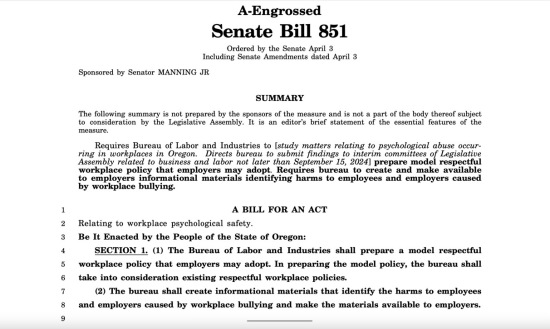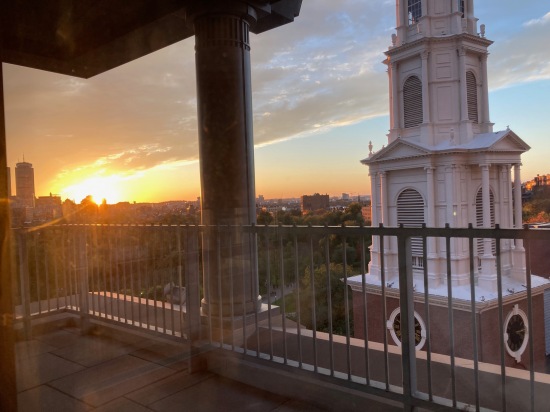
The social media image that most commanded my attention on Friday morning was a photo of Otto Frank, father of Anne Frank, taken in May 1960, on the day that the Anne Frank House in Amsterdam was first opened to the public. Otto Frank was the only member of his immediate family to survive the Nazi concentration camps. Daughters Anne and Margot, and wife Edith, all perished before they could be liberated.
Staring at that photograph, I tried to imagine what was going through Mr. Frank’s mind. But I understood that I could never truly comprehend his experience and the journey that brought him back to the place where he, his family, and four other Jewish residents spent some two years in hiding before they were discovered and eventually transported to Auschwitz.
Remembrance
And yet, even if we do not share direct memories of the Holocaust, maintaining a collective sense of remembrance, buoyed by historical literacy, is central to our understanding of how humans can engage in seemingly unthinkable atrocities. Indeed, I believe that the Nazi genocide is a key starting place for grasping our capacity for cruelty. As I wrote eight years ago:
We need to understand the Holocaust because there is no more documented, memorialized, and analyzed chapter of widespread, deliberate, orchestrated human atrocity in our history. If we want to grasp how human beings in a “modern” era can inflict horrific cruelties on others — systematically and interpersonally — then the Holocaust is at the core of our understanding.
Despite the ample historical record, we may be losing our collective memory of the Holocaust, at least in the U.S. In 2018, Julie Zauzmer reported for the Washington Post:
Two-thirds of American millennials surveyed in a recent poll cannot identify what Auschwitz is, according to a study released on Holocaust Remembrance Day that found that knowledge of the genocide that killed 6 million Jews during World War II is not robust among American adults.
Twenty-two percent of millennials in the poll said they haven’t heard of the Holocaust or are not sure whether they’ve heard of it — twice the percentage of U.S. adults as a whole who said the same.
. . . Asked to identify what Auschwitz is, 41 percent of respondents and 66 percent of millennials could not come up with a correct response identifying it as a concentration camp or extermination camp.
From genocide to bullying
Years ago, as I began my deeper dives into the dynamics of bullying and mobbing at work, I looked to the nature of genocidal behavior for understanding the eliminationist instincts that appear to be present in attempts to force someone out of a workplace and even wreck their careers. I took these steps somewhat gingerly, because I wasn’t sure of the appropriateness of comparing genocides to even the worst kinds of workplace mistreatment. You might sense these tentative steps in what I wrote back in 2011:
Do the individual and collective behaviors of the Holocaust help us to understand severe, targeted, personally destructive workplace bullying?
The question has been discussed within the workplace anti-bullying movement and requires respectful contemplation. I am well aware of the casual overuse of references to Hitler and the Nazis in our popular culture, especially in today’s overheated political discourse. Moreover, I acknowledge the dangers of comparing anything to the Holocaust, an outrage so profound that it is nearly impossible to fathom but for the abundant factual record.
Nevertheless, I have steeped myself in the experiences and literature of workplace bullying, and I have read many works about the Holocaust. Although the two forms of mistreatment are hardly equivalent — even the worst forms of workplace bullying are a world away from genocide — there are real connections between them.
I credit two important individuals for helping to validate my hesitantly shared belief that genocide and bullying exist together on a spectrum, connected by common human toxicities and failings.
First, Barbara Coloroso is an internationally recognized authority on school bullying whose work has also extended into the realm of human rights generally. In her book Extraordinary Evil: A Short Walk to Genocide (2007), she recounted how she used a talk at the University of Rwanda to explain “how it was a short walk from schoolyard bullying to criminal bullying (hate crime) to genocide,” invoking the roles of aggressor, bullying target, and bystander.
Second, Dr. Edith Eger is a noted trauma therapist, author, and Auschwitz survivor. At a conference in 2017, I had the bracing task of immediately following her eloquent keynote speech with my presentation about workplace bullying and mobbing. Looking periodically at Dr. Edie (as she is known) as she sat in the front row, I shared with everyone my unease about comparing the Holocaust to work abuse, especially in the presence of someone who had survived the horrors of Nazi concentration camps. Thankfully, when I finished my talk, Dr. Edie applauded enthusiastically and gave me a warm nod of approval. I was both relieved and honored by her response.
Commitment
In the realm of employment relations, we often use the terms workplace bullying and workplace incivility as a matched pair, with some differentiating them only slightly by severity and intention. However, I’ve come to regard workplace bullying, mobbing, and related behaviors as being closer in essential character to the even more virulent behaviors that target people for abuse or extinction en masse. The degree and extent of harm may vary greatly, but the driving psychological and social forces bear many likenesses.
Indeed, over the years, the worst accounts of workplace mistreatment that I’ve known of have had nothing to do with incompetent management or everyday incivilities. Rather, they’ve typically shared a malicious intention to diminish, undermine, and harm someone, to drive them out of the organization, and perhaps even to destroy their ability to earn a living. In each of these instances, an eliminationist instinct has been very present, usually enabled and protected by institutional cultures.
Ultimately, all behaviors on this spectrum of cruelty and toxic abuse of power demand our responses. Thus, remembrance should inspire our ongoing commitment to understand and address these behaviors, wherever they may appear.
For my part, I’ll continue my research, writing, and advocacy on workplace bullying and related topics. That work is a lifelong commitment. In addition, the contemplations offered above, some of which draw upon previous writings posted to this blog, represent some early thinking steps towards a more ambitious project that examines the varied manifestations of cruelty and abuse and assesses how law and public policy have responded to them. My objective is to contribute to a broader and deeper understanding of the differences and commonalities among these forms of severe mistreatment and what we can do about them.









